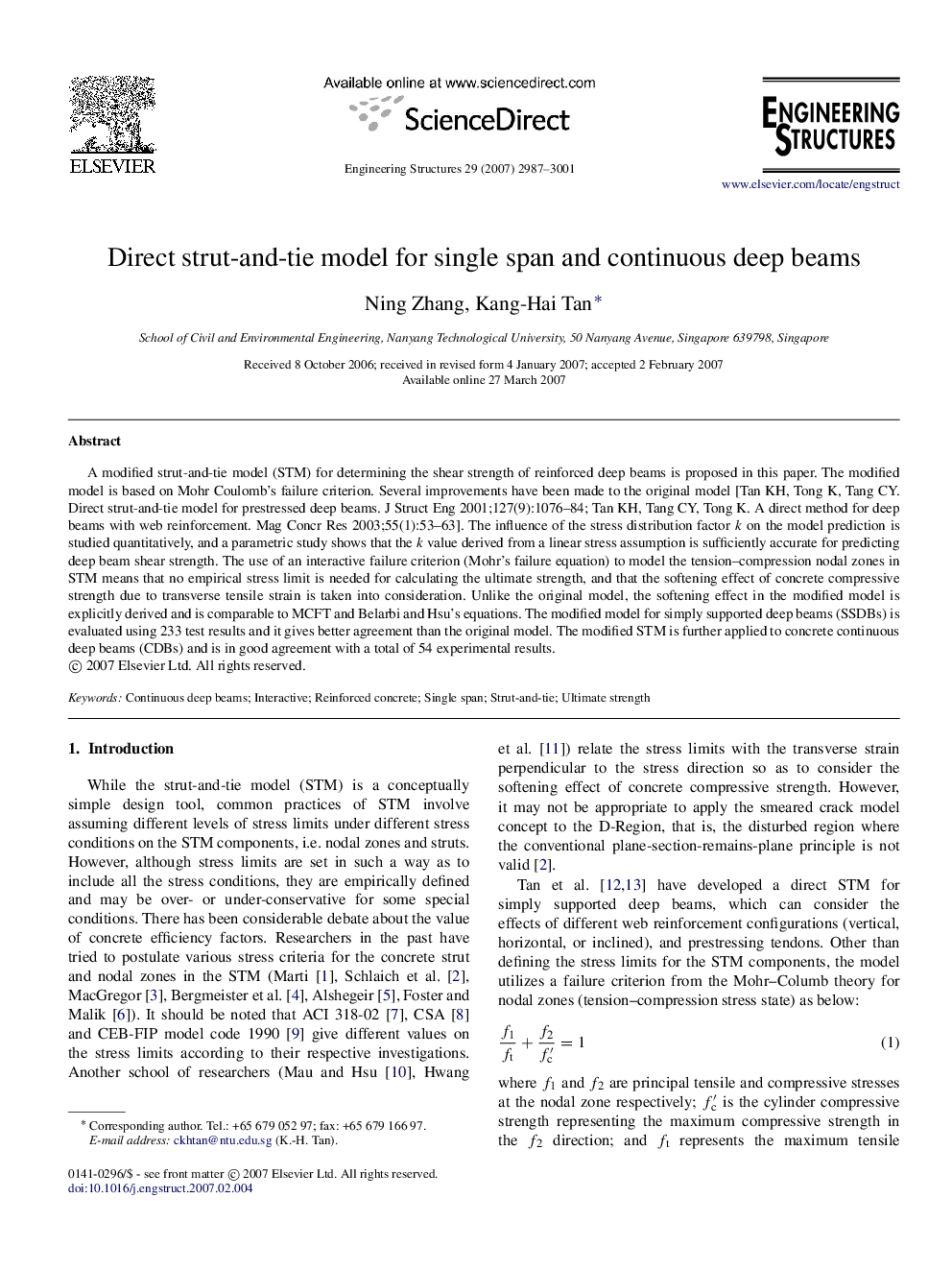| Article ID | Journal | Published Year | Pages | File Type |
|---|---|---|---|---|
| 269395 | Engineering Structures | 2007 | 15 Pages |
A modified strut-and-tie model (STM) for determining the shear strength of reinforced deep beams is proposed in this paper. The modified model is based on Mohr Coulomb’s failure criterion. Several improvements have been made to the original model [Tan KH, Tong K, Tang CY. Direct strut-and-tie model for prestressed deep beams. J Struct Eng 2001;127(9):1076–84; Tan KH, Tang CY, Tong K. A direct method for deep beams with web reinforcement. Mag Concr Res 2003;55(1):53–63]. The influence of the stress distribution factor kk on the model prediction is studied quantitatively, and a parametric study shows that the kk value derived from a linear stress assumption is sufficiently accurate for predicting deep beam shear strength. The use of an interactive failure criterion (Mohr’s failure equation) to model the tension–compression nodal zones in STM means that no empirical stress limit is needed for calculating the ultimate strength, and that the softening effect of concrete compressive strength due to transverse tensile strain is taken into consideration. Unlike the original model, the softening effect in the modified model is explicitly derived and is comparable to MCFT and Belarbi and Hsu’s equations. The modified model for simply supported deep beams (SSDBs) is evaluated using 233 test results and it gives better agreement than the original model. The modified STM is further applied to concrete continuous deep beams (CDBs) and is in good agreement with a total of 54 experimental results.
